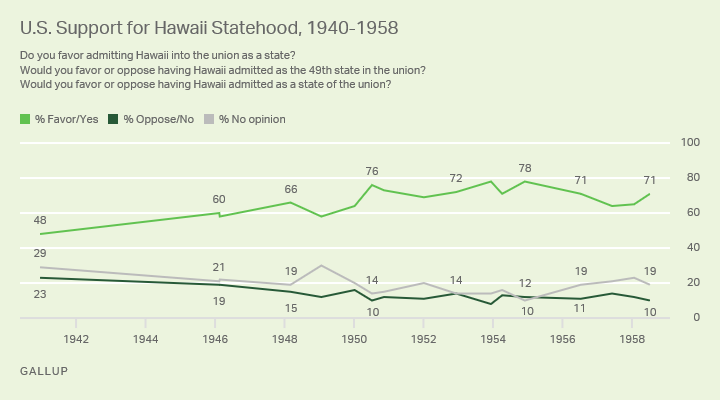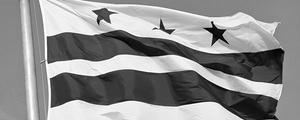WASHINGTON, D.C. -- Sixty years ago this month, President Dwight Eisenhower signed a proclamation making Hawaii the 50th and last U.S. state admitted to the union.
Gallup first polled Americans on their support for Hawaii's statehood in 1940, when slightly less than half (48%) favored statehood for the island chain. But the attacks on Pearl Harbor in 1941 cemented Hawaii's connection to the U.S., and majorities of Americans -- typically more than 60% -- supported statehood in all subsequent polls that Gallup conducted until it became a state in 1959.

Eisenhower's 1952 election benefited his own Republican Party, which gained majorities in both chambers of Congress, and GOP efforts to admit Hawaii as a U.S. state were soon underway. Support for Hawaii's statehood peaked in Eisenhower's first term, with public support ranging between 71% and 78%.
It's no coincidence that Alaska was admitted as the 49th state in the same year Hawaii gained statehood. Granting these two noncontiguous territories statehood resulted from political compromises that spanned the 1950s. Gallup polls found similarly strong levels of support for Alaska's statehood at the time.
Southern Democrats' resistance halted two separate Hawaii statehood efforts, as they feared that Hawaii's racially and ethnically diverse makeup would lead to two U.S. Senate votes for the civil rights legislation they opposed. Democrats countered with a compromise to admit Alaska first, as the mammoth territory was largely white.
Eisenhower initially rebuffed this Alaska-then-Hawaii compromise partly because of the small size of Alaska's population. However, he came around to the idea in his second term as Alaska's population grew and the political makeup and priorities of the U.S. Congress shifted.
After Alaska's admission in January 1959, Congress passed the Hawaii Admission Act in March. That summer, Hawaii residents voted overwhelmingly in a plebiscite to ratify the congressional bill for statehood. Finally, on Aug. 21, 1959, Eisenhower signed the proclamation to make Hawaii a state.
Hawaii may not be the final state in the union, as efforts to make Puerto Rico and Washington, D.C. states continue -- though with varying degrees of support from Americans. That both entities are expected to add more Democrats to Congress complicates the political viability of their statehood efforts. So for the foreseeable future, Hawaii, with its unique geography and history, enjoys the distinction of being America's youngest state.
Read more from the Gallup Vault.




